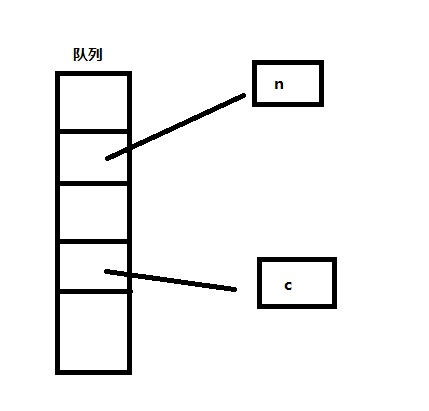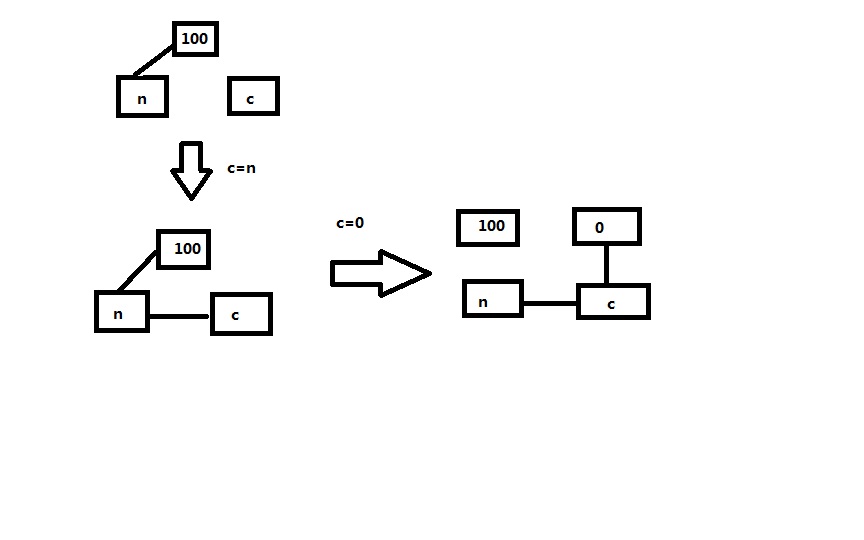以前不是很懂就写下了这篇文章
今天学习Python时才发现,赋值引用中出现的问题就是Java中的浅拷贝和深拷贝问题
找到一篇讲解很全面的文章
---------------------------原文分隔符------------------------------------
java中没有指针,但却有地址和引用的概念。在这个地方栽了不少次。
先上一个小例子
import java.util.Iterator;
import java.util.LinkedList;
import java.util.Queue;
public class Helloworld {
static class hello{
public int x;
}
public static void main(String[] args) {
Queue<hello> a =new LinkedList<>();
hello n = new hello();
n.x=100;
a.add(n); //添加n
hello c = new hello();
c=n;
a.add(c); //添加c
c.x=0; //修改c
a.add(n); //再添加n
System.out.println(a.size()+"\n");
Iterator<hello> it =a.iterator();
while(it.hasNext()) {
System.out.println(it.next().x);
}
}
}
3
0
0
0
从上面的小例子可以看出来
1.在c加入队列后,改变c的值,队列里的值也跟着改变了。
2.把n赋值给c后,更改c的值,n的值也改变了。
理解:
1.java里是有类似指针的概念的,队列其实不是真实存在,而是用链表把队列里的数据链接起来,更改原始数据实际就改变了队列里的数据。
2.java里如果把一个对象完整的赋值给另一对象,实际上他们会使用同一块地址。
上个图理解一下
如果近对对象中某一属性更改,而不是整个对象赋值,那么就不会发生引用
上代码
import java.util.Iterator;
import java.util.LinkedList;
import java.util.Queue;
public class Helloworld {
static class hello{
public int x;
}
public static void main(String[] args) {
Queue<hello> a =new LinkedList<>();
hello n = new hello();
n.x=100;
a.add(n); //添加n
hello c = new hello();
c.x=n.x; //仅对对象更改。
a.add(c); //添加c
c.x=0; //修改c
a.add(n); //再添加n
System.out.println(a.size()+"\n");
Iterator<hello> it =a.iterator();
while(it.hasNext()) {
System.out.println(it.next().x);
}
}
}3
100
0
100
版权声明:本文为Kwong_young原创文章,遵循CC 4.0 BY-SA版权协议,转载请附上原文出处链接和本声明。

